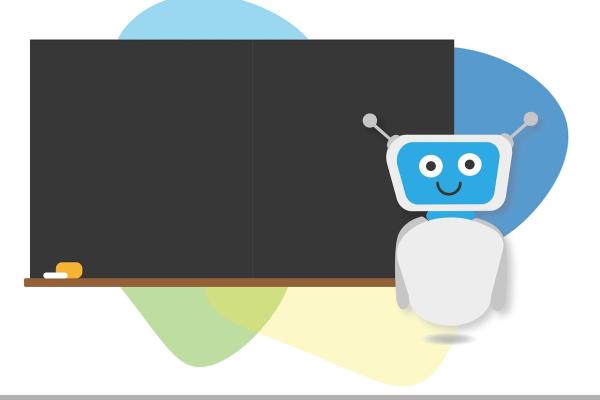The Rise of Chatbots in Higher Education: Transforming Teaching, Learning, and Student Support

The Rise of Chatbots in Higher Education: Transforming Teaching, Learning, and Student Support
As artificial intelligence continues to evolve, chatbots or “tutor bots” are becoming integral to the learning experience in higher education. These AI-powered tools are reshaping the way students receive support, interact with course materials, and engage in learning. From answering questions to simulating real-life scenarios, chatbots are no longer a novelty, they are quickly becoming a valuable part of modern pedagogy.
How Chatbots Are Used in Courses
In today’s classrooms, chatbots are being used as virtual teaching assistants across disciplines. Integrated into Learning Management Systems like Carmen, they answer frequently asked questions, provide real-time feedback, guide course navigation, and support administrative tasks (Wollny et al., 2021). In language learning, chatbots enable low-pressure conversational practice. In nursing, they simulate virtual patients. In science courses, they serve as interactive lab assistants.
More advanced implementations help facilitate discussion forums, assist with test preparation, and promote peer interaction. By providing 24/7 support, chatbots extend the instructional presence beyond the classroom, offering personalized help when students need it most (Hwang & Chang, 2023; Labadze et al., 2023; Okonkwo & Ade-Ibijola, 2021).
Capabilities, Limitations, and Ethical Considerations
Chatbots offer scalable, always-available, personalized learning support. They can reduce communication bottlenecks, provide anxiety-free practice opportunities, and help students progress at their own pace (Hwang & Chang, 2023). For example, a chatbot can act as a virtual “lab assistant” in a science class, promoting students with science trivia and guiding them through interactive experiments. However, they also present several limitations.
Many chatbots lack deep contextual understanding, struggle with ambiguous or complex questions, and may give inaccurate or superficial answers (Kooli, 2023; Okonkwo & Ade-Ibijola, 2021). Over-reliance on chatbots may lead to misinformation or surface-level learning. Ethical concerns include algorithmic bias, data privacy, academic dishonesty, and even subtle user manipulation where systems can influence user behavior without full transparency (Kooli, 2023; Labadze et al., 2023). For instance, gamified systems may influence behavior in ways that don’t align with actual learning goals Gamified feedback loops may keep students using the tool longer without necessarily deepening their understanding (Tlili et al., 2023).
Thus, transparency and human oversight are critical to mitigating these risks.
Chatbots vs. Teaching Assistants
While human TAs provide emotional intelligence, adaptability, and nuanced understanding, chatbots offer consistent, rapid support and are available around the clock. In many cases, chatbots can respond to repetitive questions more efficiently than human staff (Okonkwo & Ade-Ibijola, 2021; Wollny et al., 2021).
However, studies show mixed results. Labadze et al. (2023) found students appreciated chatbot support but still preferred human guidance for complex or emotional matters. In contrast, Wang et al. (2025) found that students rated emotional support from AI bots like Ernie Bot and ChatGPT more favorably than human TAs. Students engaging with chatbots even showed improvement in critical thinking, suggesting these tools may have more potential than previously believed—especially when intentionally designed with pedagogical goals in mind. This highlights the need to rethink rigid distinctions between human and AI support roles in education.
Use at Other Institutions and Best Practices
Several large universities are already leveraging chatbot technology to support student success:
- Georgia State University uses “Pounce,” a chatbot that helps with enrollment, advising, and academic reminders via text and university platforms.
- Arizona State University offers “Sunny,” embedded into university systems to help online students navigate coursework and scheduling.
- California State University, Northridge features “Csunny,” a chatbot for registration, financial aid, and deadline reminders.
Best practices emerging from these implementations include aligning chatbot functions with institutional goals, embedding them into core student systems, and monitoring effectiveness through student feedback and usage data.
Ensuring Accuracy and Mitigating Bias
Accuracy in chatbot responses hinges on using quality, context-specific data and continuous human supervision. Educators are encouraged to provide structured content, monitor chatbot performance, and communicate limitations transparently to students (Hwang & Chang, 2023; Kooli, 2023; Wollny et al., 2021).
Bias can creep in through training data and design. Developers must ensure diverse input sources, apply inclusive frameworks, and conduct regular audits. Developers must diversify training data and apply ethical principles to avoid reinforcing stereotypes (Okonkwo & Ade-Ibijola, 2021). Institutions should collect user feedback to spot unintentional biases in tone, content, or priorities (Tlili et al., 2023). Additionally, Labadze et al. (2023) add that bias may manifest subtly through tone, representation, or prioritization of certain perspectives, and thus mitigation strategies should include user feedback collection and inclusive content frameworks.
The Role of Educators
Chatbots should enhance not replace the role of instructors. Educators act as designers of chatbot interactions, facilitators of learning, and ethical stewards of AI use (Wollny et al., 2021). Hwang & Chang (2023) emphasize that chatbots are most effective when integrated into pedagogically meaningful activities, such as student-generated questions or interactive learning tasks. Educators are essential for fostering student learning and social-emotional development, and other areas where chatbots currently fall short, such as identifying students’ unspoken struggles, providing culturally responsive instruction, adapting teaching in real time based on student reactions, and building meaningful teacher-student relationships that foster motivation and belonging.
Long-Term Impact on Learning and Assessment
Chatbots have the potential to revolutionize assessment by promoting continuous feedback, adaptive learning, and student autonomy (Okonkwo & Ade-Ibijola, 2021). However, concerns remain. Overuse may discourage deep thinking, and improper implementation could jeopardize academic integrity (Kooli, 2023; Tlili et al., 2023).
Educational institutions will need to evolve their assessment models to focus on creativity, collaboration, and critical thinking areas where chatbots can assist but not replace human judgment.
Student Perceptions
Overall, students welcome chatbots for their convenience and helpfulness with routine tasks (Hwang & Chang, 2023; Labadze et al., 2023; Okonkwo & Ade-Ibijola, 2021). Yet, they continue to value human instructors for deeper learning and emotional support. While many students see chatbots as useful tools, few believe they can replace teachers or TAs entirely (Tlili et al., 2023).
Theoretical and Pedagogical Support
Research increasingly supports the pedagogical potential of chatbots. The “learning-by-teaching” approach shows that explaining content to a chatbot can enhance metacognitive skills (Hwang & Chang, 2023). Chatbots also support self-regulated learning and formative feedback strategies (Wollny et al., 2021).
That said, some chatbot designs still lack grounding in learning theory, and more research is needed to ensure these tools align with evidence-based teaching practices (Okonkwo & Ade-Ibijola, 2021; Kooli, 2023).
Course-Specific Chatbots vs. General Tools
There’s growing evidence that course-specific bots outperform general-purpose AI tools like ChatGPT when it comes to academic accuracy (Okonkwo & Ade-Ibijola, 2021). Tailored bots trained on discipline-specific content can provide more relevant, contextually accurate responses, such as problem-solving in STEM courses(Labadze et al., 2023). In contrast, general LLMs, while flexible, often generate vague or misleading responses without proper prompts or guidance.
For maximum effectiveness, educators should favor chatbot tools built around the specific goals, materials, and learning outcomes of their course.
Conclusion
Chatbots are poised to transform higher education by offering scalable, personalized support to students. When thoughtfully implemented, they can enhance student engagement, streamline communication, and contribute meaningfully to learning. However, they must be deployed ethically, grounded in pedagogy, and supported by ongoing educator involvement to ensure they promote and not undermine educational goals.
References
CSUNny. (2022, September 2). California State University, Northridge. Link to CSUN website for reference.
Hwang, G. J., & Chang, C. Y. (2023). A review of opportunities and challenges of chatbots in education. Interactive Learning Environments, 31(7), 4099-4112.
Home | Hey Sunny. (n.d.). Link to CSUN website for reference.
Kooli, C. (2023). Chatbots in education and research: A critical examination of ethical implications and solutions. Sustainability, 15(7), 5614.
Labadze, L., Grigolia, M., & Machaidze, L. (2023). Role of AI chatbots in education: systematic literature review. International Journal of Educational Technology in Higher Education, 20(1), 56.
Okonkwo, C. W., & Ade-Ibijola, A. (2021). Chatbots applications in education: A systematic review. Computers and Education: Artificial Intelligence, 2, 100033.
Reduction of Summer Melt | Georgia State Student Success Initiatives. (2019, May 21). Student Success Programs. Link to Georgia State website for reference.
Tlili, A., Shehata, B., Adarkwah, M. A., Bozkurt, A., Hickey, D. T., Huang, R., & Agyemang, B. (2023). What if the devil is my guardian angel: ChatGPT as a case study of using chatbots in education. Smart learning environments, 10(1), 15.
Wang, P., Yin, K., Zhang, M., Zheng, Y., Zhang, T., Kang, Y & Feng, X. (2025). The effect of incorporating large language models into the teaching on critical thinking disposition: An “AI + Constructivism Learning Theory” attempt. Educ Inf Technol, 30(11625–11647). Link to article website and reference.
Wollny, S., Schneider, J., Di Mitri, D., Weidlich, J., Rittberger, M., & Drachsler, H. (2021). Are we there yet?-a systematic literature review on chatbots in education. Frontiers in artificial intelligence, 4, 654924.

